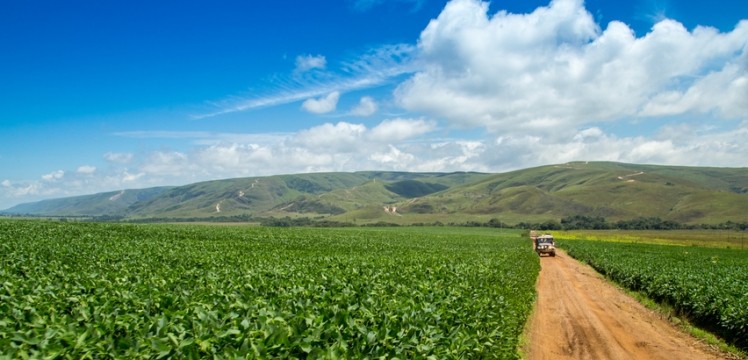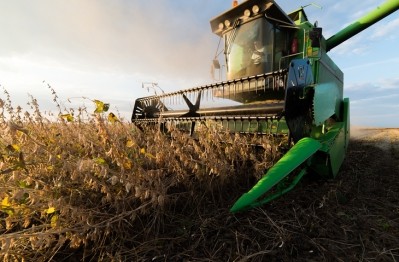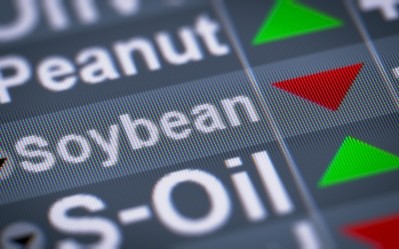USDA: Brazil looks to expand soybean planted acres

The US Department of Agriculture’s (USDA) Foreign Agriculture Service released details of the soybean and soybean meal markets in Brazil in a report from the agricultural attaché.
“Post forecasts 2018/19 soybean planted area to increase by 2%, to 35.8 million hectares (ha),” he said. “The increase in area for the 2018/19 crop is due to expectation of higher prices, higher expected demand by Chinese buyers, and an increase of domestic consumption.”
Exports are expected to be strong, while soybean processing is anticipated to hit record highs, he said.
“Brazil is heavily competing with US soybeans and is expected to continue to take away market share from the United States in 2018,” he added.
Production specifics
The estimate for 2017/18 soybean production is a record 115.5m metric tons based on excellent yields for most producing states and ideal weather conditions during the growing season, said the attaché. About 35m hectares were planted for the season with an expansion in planted area occurring in all regions.
Production for soybeans in 2018/19 is anticipated to reach about 115m metric tons (mmt), said the attaché. If realized, it would be the second largest crop produced.
Although overall area in production is expected to be a record high, production is predicted to drop slightly based on yield trends, he said. “Productivity during the 2017/18 and 2016/17 seasons were way above trend because of ideal weather conditions throughout Brazil and excellent performance by new technologies in the market,” he added.
The cost of producing the feed crop is anticipated to increase stemming from rising costs for pesticides and fertilizers, he said. But product demand also is expected to grow.
Soybean meal production and exports
The 2017/18 market year is forecast to see about 43.5mmt of soybeans processed, said the attaché. Looking forward, increased meal exports are anticipated to support the expected increase in crush especially given the smaller soybean crop expected in Argentina.
“Post forecasts 44mmt of soybeans destined for processing in 2018/19 Marketing Year (MY),” he said. “The increase is a result of the continuation of the economic recovery in Brazil as well as export demand.”
The country has an estimated crush capacity of about 62m mt, he said. About 70% is expected to be used next year, however, there are no short-term investments expected to increase crushing facilities.
Soybean meal production in 2017/18 is expected to be about 33.7mmt, however that amount is anticipated to increase in the 2018/19 marketing year, he said. “This increase is a result of higher export demand due to the lower competition by Argentina because of the drought,” he added.
Domestic consumption for 2017/18 is forecast to be about 18mmt, with that amount growing in the following marketing year, said the attaché. “Domestically, Brazil’s feed sector continues to use soybean meal as the second most important ingredient for animal feeding,” he added.
“MY 2017/18 exports are forecast at 16.5mmt, close to 20% higher compared to the previous season,” he said. “The increase is completely due to the export opportunities that became available as a result of the drought in Argentina.”
However, meal exports in 2018/19 are anticipated to drop as production in Argentina is expected to improve and share the markets in Asia and the EU, he said.
Soybean exports
In the 2017/18 marketing year, soybean exports are expected to set a new record at 69mmt, the growth stems in part from the expansion of exportable supplies, said the attaché.
“The higher protein levels of Brazilian soybeans, the additional Chinese requirements on foreign matter on US soybeans, and the current trade environment, are expected to help Brazil support higher exports to the Chinese market,” he said. “Exports to China are on pace to hit its highest levels yet.”
From 2012-2016 the export average for soybeans going to China in December was 199,000 metric tons, he said. In 2017, 2m metric tons were exported in December.
“For January, the 5-year average (2013-2017) is 215,000mt but Brazil exported about 1.3mmt to China in January 2018,” he said. “This pace is expected to continue in 2018 due to the Brazilian bumper crop and Chinese demand.”
Previously, soybean exports would see competition from corn exports starting in July, but investment and increased capacity at the ports has expanded the export potential, said the attache. About 25% of the soybean exports are expected travel through new, northern ports in 2018.
“New export routes from Miritituba to Barcarena and Santarem added a new northern gateway for soybeans (and corn) exports from North Mato Grosso (MT) to China, Europe, the Middle East, and Mexico,” he said. “These new export routes have shifted the transportation dynamics in Brazil.”
However, there are still some infrastructure challenges to address as several large projects have not been completed, he said.
The export outlook for 2018/19 has been set at 67mmt, based on continuing strong demand from China, he said. “The export forecast is slightly lower compared to the previous year due to lower exportable supplies because of higher domestic consumption,” he added.
Overall imports for marketing year 2018/19 are expected to drop from the anticipated 200,000 metric tons imported in 2017/18, said the attaché.
Prices in 2018 were anticipated to stay at similar levels to those seen in 2017, but they have started to increase owing to the ongoing drought situation in Argentina, he said. March 2018 prices averaged the highest levels since December 2016.
“Due to the high demand of Brazilian soybeans, both domestically and internationally, Brazil is forecast to bring down its ending stocks to less than 1mmt in the MY2017/18,” he said. “This could create more upward pressure on prices later in the year, which will also support a higher planted area 2018/19.”










